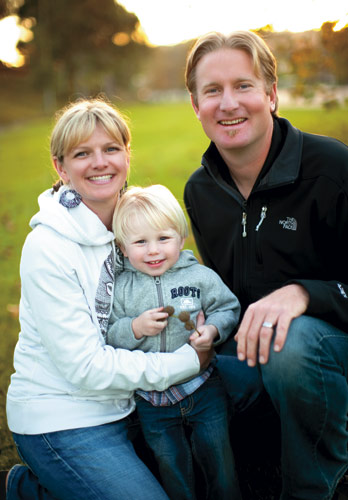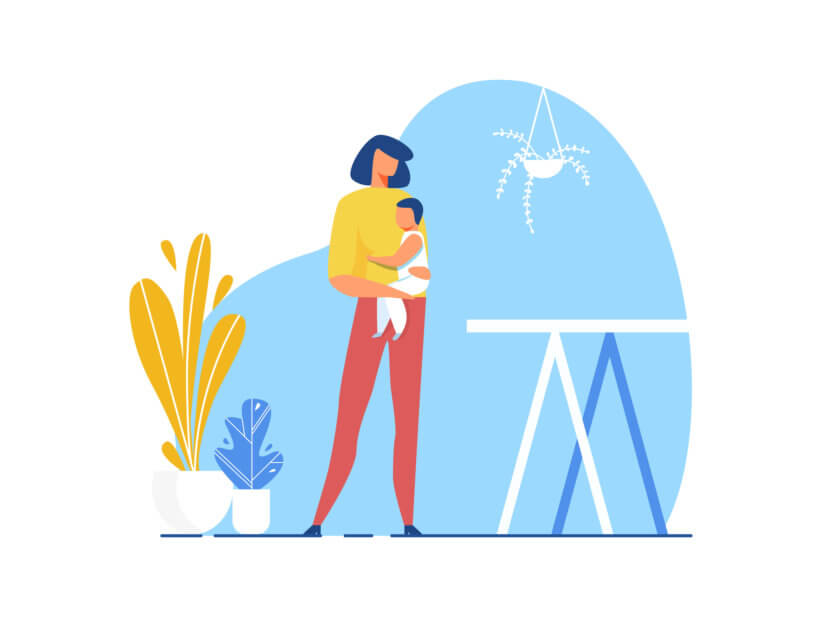When you’re expecting a baby, you do what you can to take control of the experience. You go to your ob-gyn appointments and childbirth classes, take prenatal vitamins, and try to eat a healthy diet. Still, there’s always that feeling that Mother Nature’s really the one in charge, and you’re just along for the wild ride. Ever wonder what you’d do if your pregnancy or labor suddenly took a surprising turn? That’s what happened to these three women, who were forced to call upon reservoirs of strength and resourcefulness they never knew they had in order to bring their babies into the world.
Babies in danger
“We nearly lost our twins.”
— Jennifer Miller, 35
Two weeks before giving birth, Miller woke up in a puddle.
“I assumed my water had broken, so I called my doctor and went to the hospital,” says the web designer.
There, though, Miller was told her water hadn’t broken and she returned home, where she continued to leak fluid.
“I also felt like there was blood rushing through me. I could hear it pounding in my ears,” she says.
Then, 10 days before her due date, Miller went into labor. At the hospital, she developed a 102-degree fever due to an uterine infection.
As it turned out, “I had been leaking amniotic fluid all along,” she says. Consequently, even though the babies were in the right position to be born vaginally, Miller had an emergency C-section.
Baby Josie was born first; she weighed just 2 pounds, 12 ounces, and was followed by Anna, who weighed 3 pounds, 15 ounces. Because of their size difference, the identical twins were easy to tell apart. Although Anna was the larger baby, “she was basically stillborn; she had an initial APGAR of 0 and she was bright red, but they were able to bring her back,” Miller says.
After giving birth, Miller learned that she had an undiagnosed case of twin-to-twin transfusion syndrome, which is a complication specific to identical twins who each have their own amniotic sac but share a single placenta. With this syndrome, blood flow through the vessels in the placenta connecting the twins becomes unbalanced; one twin, the “donor,” doesn’t get enough blood while the larger twin, the “recipient,” becomes overloaded with it.
In turn, the recipient twin increases the urine it makes to reduce its blood volume. That twin eventually has too much amniotic fluid. The donor twin produces too little urine and the amniotic fluid becomes very low or absent.
“They mentioned TTTS at the hospital to me once, but nobody talked to me about it,” Miller says. Fortunately, after some initial developmental delays, Josie and Anna are now perfectly healthy 7-year-olds.
Life lesson: “Looking back, I dismissed a lot of things I shouldn’t have, chalking them up to just having twins,” says Miller. “Like the fact that I began feeling really uncomfortable and felt the constant rush of excess blood, which is a symptom of TTTS.”
For more about twin-to-twin transfusion syndrome, visit www.tttsfoundation.org.
A deadly complication
“I survived a rare syndrome.”
— Miranda Klassen, 33
When Klassen, a sales representative, was in labor with her first child, she had a seizure and went into cardiac arrest, which caused a temporary lack of blood flow to the baby because of her lack of oxygen. To restore her heartbeat, her husband, Bryce, later told her that respiratory technicians administered chest compressions while her obstetrician performed an emergency C-section. Her baby, a boy, was delivered in just eight minutes. Yet, it took 10 minutes to resuscitate him. Would he be OK? It was too soon to tell.
While the baby was whisked to the hospital’s neonatal intensive care unit, doctors put Klassen into a medically-induced coma to assess the situation. An electrocardiogram showed amniotic fluid in the chambers of her heart, indicating that she had suffered from an amniotic fluid embolism, an extremely rare complication that manifests in response to amniotic fluid entering the bloodstream during delivery, which is not unusual.
“But a very select few women have an anaphylactic-like reaction to the fluid, which causes life-threatening blood clots. I was one of them,” Klassen says.
An amniotic fluid embolism can cause heart and lung collapse and excessive bleeding and clotting. Amniotic fluid embolism is an elusive syndrome with no known cause. The condition is estimated to affect one in 80,000 women during labor and when it happens, 80 percent of the women don’t survive. Newborn mortality is 30 to 40 percent. Surviving mothers and babies can suffer serious complications, such as brain and heart damage.
After Klassen’s diagnosis, doctors performed intravenous surgery to place a filter just below her heart to catch any potential blood clots that could form and travel to her heart as a result of the embolism.
The filter, in fact, caught a large clot that would have otherwise killed her.
“It was so large that they weren’t able to remove it, and it will be in me forever,” Klassen says. “Over time, it’s very likely that I will lose a lot of circulation in my legs as a result of it.”
Nonetheless, she’s glad to be alive and to be there for Bryce and her baby, whom they named Van. He’s now a completely healthy 4-year-old, meeting all of his developmental milestones.
Life lesson: After her near-death experience, Klassen started the AFE Foundation (www.afesupport.org), the first of its kind to educate women about amniotic fluid embolism and support families who have been affected.
“I’m going to take the blessing of having survived AFE and create a voice for people who can’t,” she says.
“Only five percent of people come out completely intact after AFE like my son and I have.”
Wrong diagnosis
“I was a walking fish tank.”
— Mikala Vidal, 28
When Vidal, a former public relations representative, was pregnant with her first child, she immediately began retaining so much water that almost every part of her body was bloated.
“At work, I joked that I was a walking fish tank. I had only one pair of shoes I could wear, and I could barely squeeze my arms and legs into my maternity clothes,” Vidal says.
Her ob-gyn brushed it off.
“I was told, ‘Some women just carry more water,’ ” recalled Vidal, so she shrugged it off, too. But six weeks before her due date, Vidal noticed some spotting, so she went to the doctor. From there, she was hospitalized and diagnosed with preeclampsia (pregnancy-induced hypertension). After a few days in the hospital, she was induced, because she had also been leaking amniotic fluid.
“At one point during the labor, I felt a huge pain just under my rib cage. When I told the nurse, she said it was just a contraction, and it was time for my epidural. I didn’t think it was a contraction, but then again, I had never had a baby before. So I got the epidural, and it did take away the pain,” Vidal says. Ten hours later, she delivered a healthy baby girl, Celia, who weighed 5 pounds, 1 ounce.
“Preeclampsia goes away after the baby is born, so I should have been cured,” Vidal says. But after her epidural wore off, she still had that excruciating rib-cage pain. “It turns out that my liver was failing, which was causing the pain, along with a few other organs. I had to be med-flighted to the intensive care unit at another hospital,” Vidal says.
There, she was stabilized and diagnosed with a severe case of hemolysis syndrome — a breakdown of red blood cells — elevated liver enzymes, and a low blood platelet count.
“It presents like preeclampsia, but only gets worse after you deliver,” Vidal says. Hemolysis syndrome occurs in less than one percent of all pregnancies, and mortality rates are reported to be as high as 25 percent.
Life lesson: “At the ob-gyn’s office, I just trusted the certified nurse midwife and never asked questions, which was a huge mistake. I knew retaining that much water wasn’t normal. I realize the importance of being your own advocate and asking as many questions as possible about your health and the health of the baby,” Vidal says.
For more information about hemolysis, visit www.aafp.org/afp/990901ap/829.html.
Sandra Gordon is a mom of two who writes about parenting, health, nutrition, and baby products for books, national magazines and websites. Visit her at www.sandrajgordon.com.























